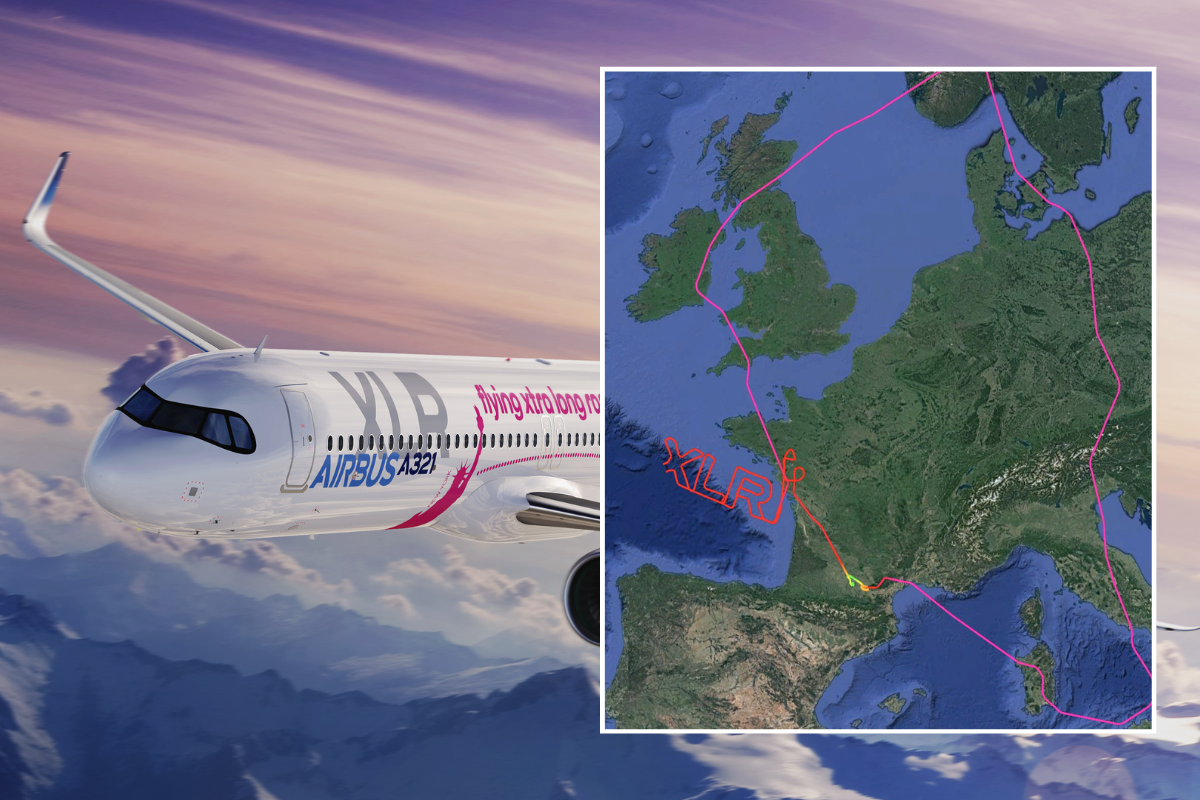
European aircraft manufacturer Airbus has flown a single-aisle jet around Europe for 13 hours without a refuelling stop as part of a major test to certify the A321XLR for bum numbing long-haul flights that could connect London and Dehli, Sydney and Kuala Lumpur and Dallas and Hawaii using the narrowbody aircraft.
To achieve this feat of engineering, Airbus has installed new fuel tanks that will help to extend the range of the A321XLR (standing for extra long range) by around 15 per cent compared to the A321LR and 30 per cent more than the standard A321neo, which is used for short-haul flights.
To get its 8700km range, the #A321XLR features a heavily modified fuel system. Yesterday, @Airbus spent 13 hours in the air making sure it works—and writing a message in the sky. https://t.co/2rx8UwFs9f pic.twitter.com/tKnIji0Auz
— Flightradar24 (@flightradar24) December 14, 2022
Promising the ability to fly long-haul flights up to 11 hours with as many as 220 passengers onboard, the A321XLR has been snapped up by a number of airlines, including American Airlines, Air Canada, Qantas and United Airlines.
Ultra fuel efficient and much cheaper to run than standard widebody jets that normally operate long-range services, the A321XLR is set to be a popular choice for cost-conscious airlines but both Airbus and the carriers that buy the aircraft will have to convince passengers that the single-aisle jet can offer widebody comfort.
That will be a relatively easy task at the front of the plane where airlines are planning to install fully lie-flat Business Class seats with direct aisle access but even in Economy, the aircraft manufacturer is promising ‘true long-haul comfort’ with 18″ wide seats as standard and other mood enhancing features.
Before the A321XLR starts flying commercially, however, Airbus still needs to complete a certification flight-test campaign that only got going a few months ago. A major test of the campaign was proving the long-range A321XLR could actually fly long-range.
On Tuesday, Airbus did exactly that, flying one of the test A321XLR’s in a giant loop over Europe – and even finding the time to spell out XLR off the French coast over the Bay of Biscay.
For this test flight, the aircraft easily beat the maximum flight time that the aircraft is being certified for by two hours. The main point of this test flight was to prove the new fuel systems worked exactly as they intended, and insiders claim it all went to plan.
For now, the A321XLR is set to enter service in 2024 – supply chain issues and manufacturing delays aside. We’ll then be able to find out for sure whether Airbus’ grand claims of long-haul comfort are for real.
Related
Mateusz Maszczynski honed his skills as an international flight attendant at the most prominent airline in the Middle East and has been flying ever since... most recently for a well known European airline. Matt is passionate about the aviation industry and has become an expert in passenger experience and human-centric stories. Always keeping an ear close to the ground, Matt's industry insights, analysis and news coverage is frequently relied upon by some of the biggest names in journalism.








How do the XLR and LR range compare to the 757-200?